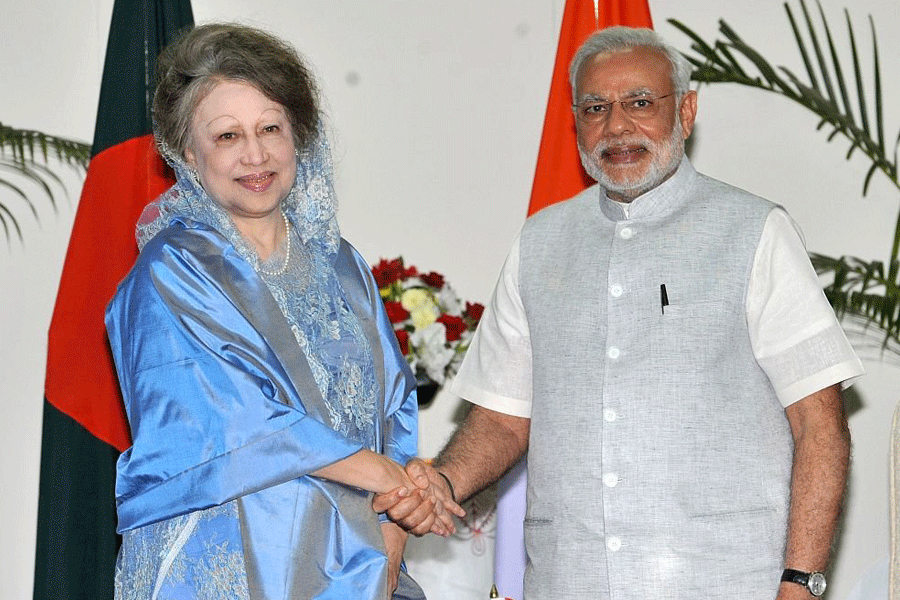 |
| Sukanya Chakrabarti |
New Delhi, Jan. 13: Astronomer Sukanya Chakrabarti has moved closer to proving that the mystifying ripples of hydrogen gas near the edge of the Milky Way galaxy are caused by an unseen dwarf companion she had predicted.
The Calcutta-born Indian-American astronomer has shown that the distribution of hydrogen gas observed near the very edges of some spiral galaxies may be the gravitational signatures of smaller, unseen satellite galaxies.
The mathematical technique she has developed called tidal analysis may solve what some astronomers have dubbed the mystery of missing dwarfs —current cosmological theories predict a far higher number of dwarf galaxies than have actually been observed so far.
In a paper submitted to The Astrophysical Journal, Chakrabarti and her colleagues have demonstrated the validity of tidal analysis to correctly predict dwarf galaxies, successfully applying it on two neighbouring galaxies with known companion dwarfs.
“This is the proof-of-concept,” said Chakrabarti, a post-doctoral fellow at the University of California, Berkeley, who was asked in 2009 by her colleague Leo Blitz to examine what was causing the disturbances in hydrogen gas distribution near an edge of the Milky Way.
She analysed the hydrogen observed through radio telescopes and predicted in the same year that an unseen dwarf galaxy about 270,000 light years on the opposite site of the Milky Way from Earth could produce these disturbances, or ripples.
The companion appears to have a mass about one-hundredth that of the Milky Way, but gas and dust in the Milky Way disc are obscuring its view. Astronomers believe a larger sample of galaxies would help establish the reliability of the tidal analysis technique.
In her new study presented today at a conference of the American Astronomical Society in Seattle, Washington, Chakrabarti described how she has used tidal analysis to successfully predict the masses and locations of two dwarf companions of two other galaxies -- M51 and NGC 1512 -- both located about 30 million light years from the Milky Way.
The results from the study on M51 and NGC 1512 bolster confidence in the forecast for the Milky Way’s own secret companion, said Chakrabarti, who was born in Calcutta and moved to the US with her parents -- both philosophers at an academic institution in the US -- when she was 10.
“When I was a kid, I wanted to be a detective,” Chakrabarti said in a telephone interview. But she studied physics and turned to astronomy after being inspired partly by the work of Carl Sagan, the legendary American scientist and science communicator.
But Chakrabarti’s tidal analysis may help solve a cosmological mystery. Current cosmological theories are very successful in predicting large-scale distribution of galaxies in the universe. However, the current theories appear to over-predict dwarf galaxies -- there are far fewer dwarf or satellite galaxies observed than predicted.
“We’re hoping our work will bring observations in agreement with theory,” Chakrabarti told The Telegraph. Her co-authors in the study are Blitz, Frank Bigiel, a post-doctoral fellow at the UCB, and Philip Chang from the Canadian Institute of Theoretical Physics, Toronto.
Barbara Whitney, an astronomer affiliated with the Space Sciences Institute in the US, hopes to look for the predicted unseen dwarf companion of the Milky Way using the Spitzer Space Telescope, a space-based observatory launched by Nasa in 2003.
Whitney and her colleagues hope to spot the dwarf with infrared observations which may, in principle, be used to see through the galactic dust which is believed to be obscuring its view via conventional optical telescopes.
“If such dwarfs can be confirmed through observations, this method would be an important tool to understand the missing dwarf problem,” said Pijushpani Bhattacharjee, a physicist at the Saha Institute of Nuclear Physics, Calcutta, who was not associated with the study, but is familiar with Chakrabarti’s research.










